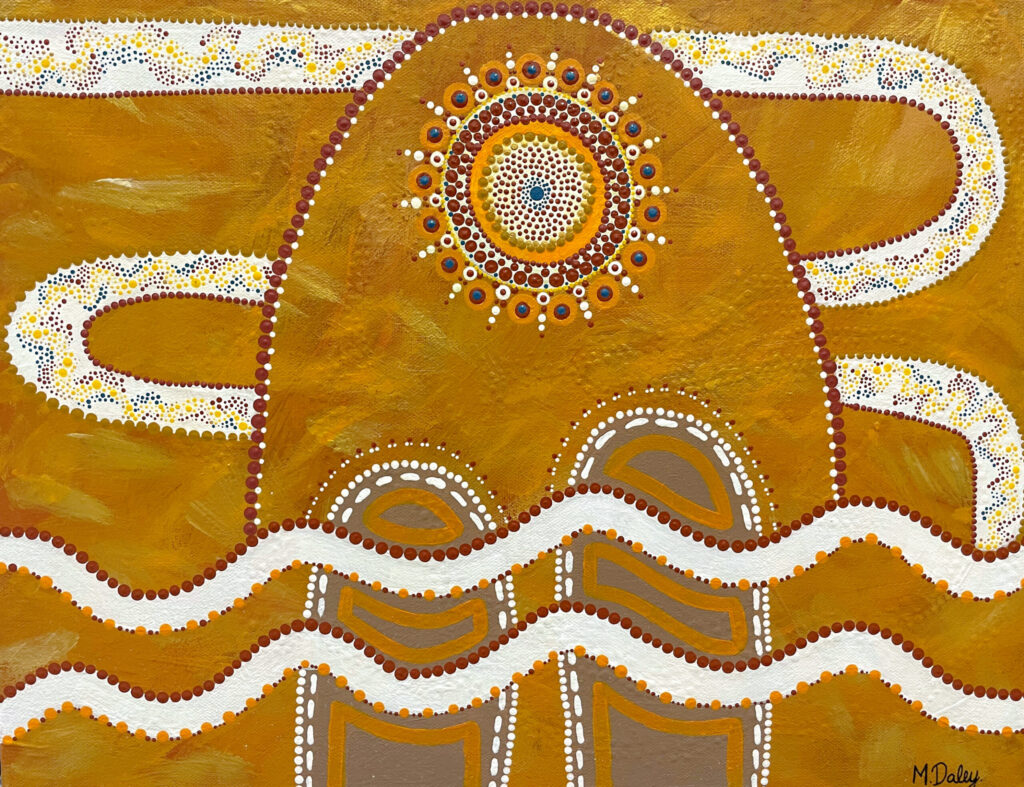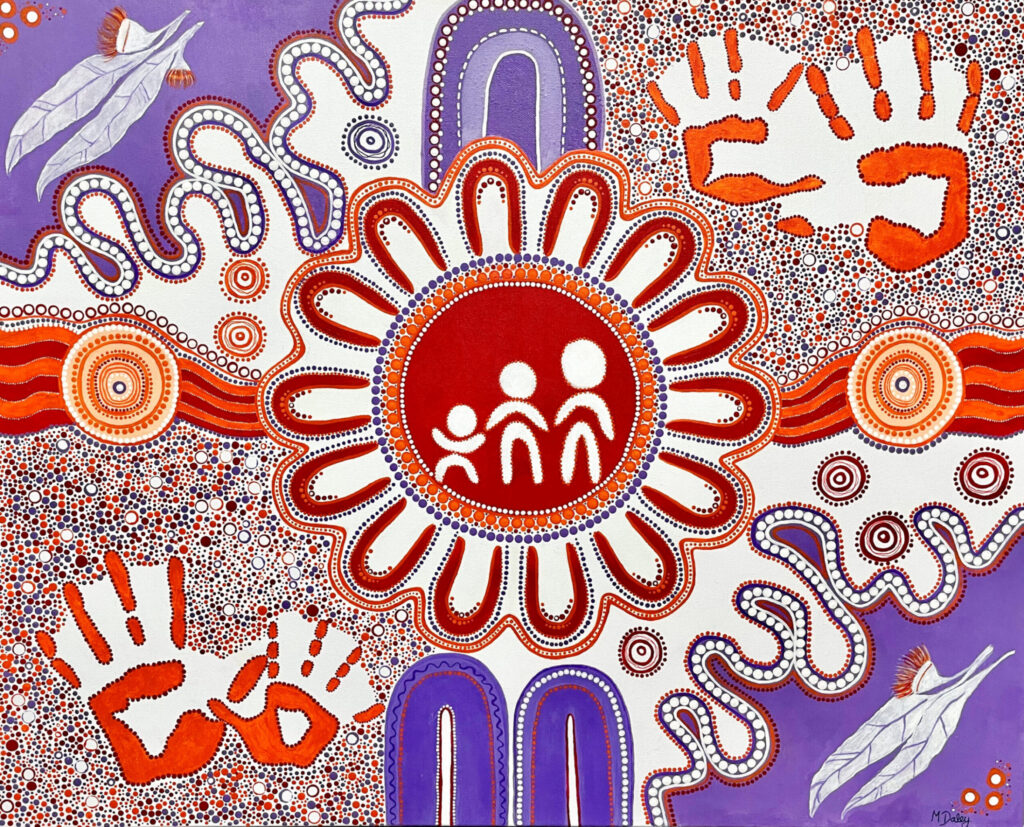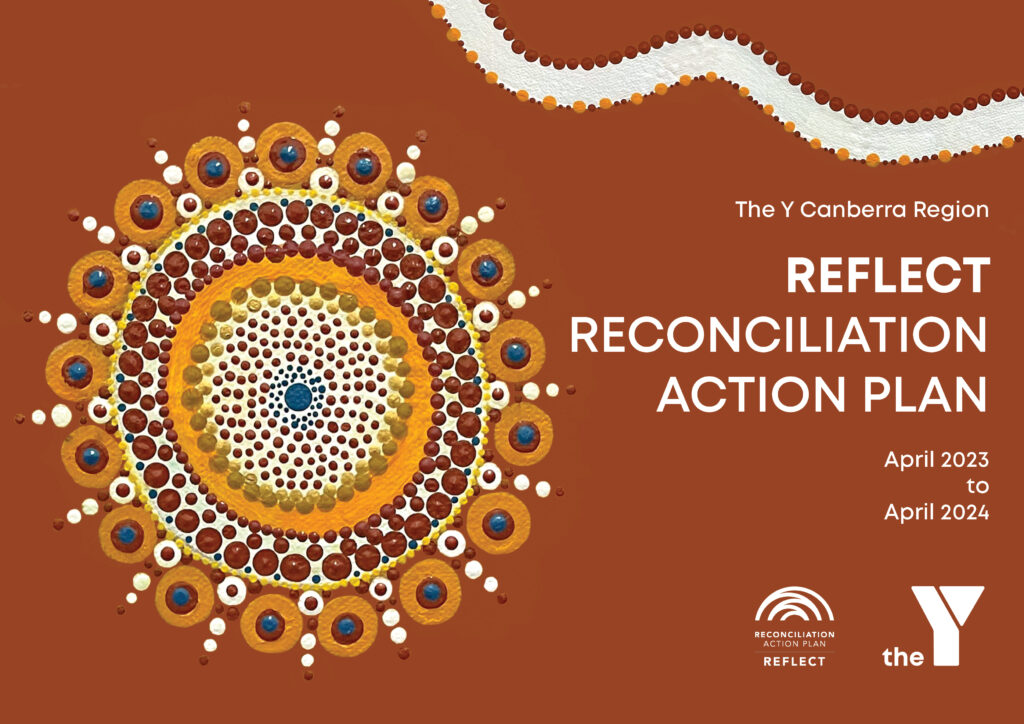Reconciliation at the Y
The Y Canberra Region, in June 2023, launched its first Reconciliation Action Plan after significant consultation with members of our local First Nations community, across the ACT and NSW, and Reconciliation Australia.
The Y Canberra Region was founded only 80 years ago, and was established to serve the needs of our growing Canberra community, extending now from ACT to NSW. The traditional owners of this broader Canberra region, the Ngunnawal, Ngambri, and Ngarigu people have continually lived and cared for this land for over 60,000 years.
The Y’s in Australia have aligned under the mission to build a better world, with and for young people.
“To be true to this mission, we simply cannot progress without commencing this important reconciliation journey, in working with and for our First Nations local communities.” said Kirsty Dixon, CEO of The Y Canberra Region. “This inaugural RAP for the Y Canberra Region, is timely, in supporting the Y’s vision to promote and advance justice, peace, equity and human rights for all and follows the important position by Y Australia to support the Voice to Parliament and Constitutional recognition for First Nations People.”
The Y Canberra Region is proud of our community partnerships, and know that in order to achieve real and lasting change, it requires these genuine connections with our local First Nations people.
Through our connections, the Y Canberra Region has partnered with several community organisations and programs, such as The Ngunnawal Bush Healing Program; Aaron Chatfield of Dreamtime Connections; Rayne Huddleston of Urulah Cultural Art; Kippax Community Tracks to Reconciliation; and SBS Inclusion Training.
We have also worked closely with local Elders in consulting with the cultural significance of Camp Sturt, a site that the Y Canberra previously hosted school camps on.
We are excited about enhancing our current partnerships and also creating new linkages with Aboriginal and Torres Strait Islander stakeholders and organisations in commencing our reconciliation journey!
The Y Canberra Region launched our Reflect RAP at the Y Sailing Club on June 15th.
The artwork that has been created for our RAP and for the Y is by local Ngunnawal/Wiradjuri artist, Megan Daley.
Megan spent her childhood in Wiradjuri country in Wellington NSW before moving to Canberra in 1999. Her art is reflective of the two environments she calls home. She is passionate about Aboriginal social and emotional wellbeing and childhood development, and works as a child and family worker with the ACT Government. More of Megan’s artwork can be found at the Burrunju Aboriginal Corporation.
Artwork, Megan Daley

Winyu, 2022
Megan Daley, Ngunnawal Artist
“Winyu” means “Sun” in Ngunnawal language.
This painting represents a child an a parental figure standing in the glow of the sun together.
This painting speaks about the special connection between adult and child, and the role of sharing knowledge and the responsibility to pass on culture to the next generation and ensuring that we instil culture, values and knowledge in our youth as it is as precious as gold.
The white curved lines in the background represent the passage of time and how learning is a lifelong journey that we take together with our young ones. Sharing, learning and growing.

Communities Flourishing, 2023
Megan Daley, Ngunnawal Artist
Communities Flourishing represents the work of the Y Canberra in connecting communities in the ACT Region and across Australia.
The colours are the well-known colour palette of the Y – red, orange and purple. The central figure shows a child with two other figures, representing parents, siblings, friends and significant community members. It also represents a single
person as they pass through the stages of their life as part of our community – from children, to adolescents and seniors.
The figure is then surrounded by their extended community providing support and connection, and handprints surround this to represent working together supporting with a helping hand.
The central figure is then connected to two pathways representing communities sharing resources, and also connecting to the central figures to provide knowledge and care to the community.
Gum leaves are shown here to represent new growth, with the gum blossoms representing communities and their ability to thrive when provided adequate support to be their very best.

